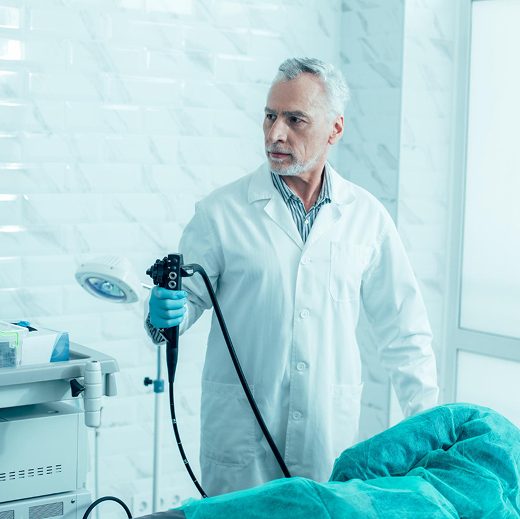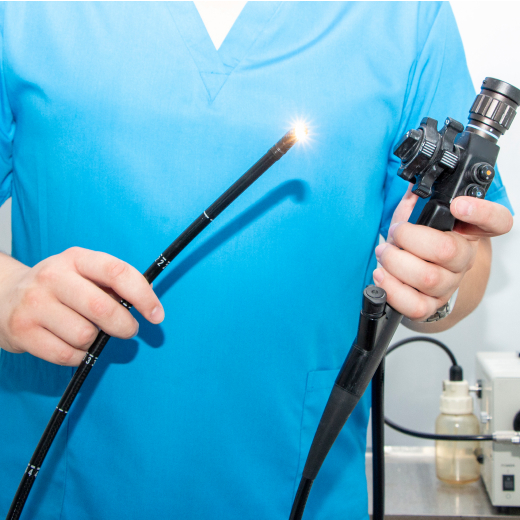An Endoscopy test allows the doctors to view the internal parts of a patient’s body to diagnose diseases and inspect the organs.
It is a routine, outpatient procedure that is required to examine a patient’s digestive tract. At LI Medical Group, Dr. Ronald Fagan is the head gastroenterologist.
We specialize in performing safe endoscopy tests using our state-of-the-art equipment at our Endoscopy Center based in Bethpage Farmingdale, NY.
So, whether you are a resident of Hicksville, Farmingdale, or any other area surrounding New York, our Endoscopy Specialists are well-equipped to diagnose any early signs of digestive system diseases. Schedule a consultation today!

Endoscopy, also known as upper endoscopy, EGD, or esophagogastroduodenoscopy, is a minimally invasive, non-surgical procedure that helps physicians examine the patient’s digestive tract. During this procedure, a long flexible tube with a camera is inserted into the opening of the mouth.
At our endoscopy center in Bethpage Farmingdale, NY, we have a fully equipped testing facility and a team of certified gastroenterologists to conduct testing using advanced technology equipment and diagnose a range of diseases..
The endoscopy test is used to diagnose many conditions that may affect the esophagus, stomach, and intestines. The Upper GI Endoscopy is usually conducted to identify many different diseases, such as:
An endoscopy procedure primarily involves inserting a long, flexible tube called an endoscope down the throat and into the patient’s esophagus. It usually has a microscopic camera on the end of the endoscope.
It creates clear images of hard-to-reach organs, such as your pancreas, inside of the esophagus, stomach, and small intestine (duodenum).
As the upper GI Endoscopy is a minimally invasive procedure, there are some possible complications that may occur, such as:
There are also a few unique health conditions that may put patients at other risks. Therefore, it is crucial to ensure discussing all of your concerns with the healthcare professional before the procedure.
If you are over 50 and suffering from digestive or intestinal issues, an endoscopy can help detect any abnormalities.
LI Medical Group is a fully equipped endoscopy test facility with advanced technology and a team of the best endoscopy specialists in Bethpage Farmingdale, NY. Schedule a consultation for expert assistance.

Upper GI endoscopy is an outpatient procedure. Thus, it is recommended for patients to bring a family member or a friend with them to drive them home after the procedure. It usually involves the following:
